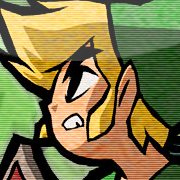Over the years I've noticed a lot of confusion and misinformation regarding DPI when talking about our scans, and it's even confused me a bit, so I thought I'd lay a couple of basics out here for the curious, and explain why it really shouldn't be part of the conversation at all. I'm now finished writing this post and getting tired just looking at it, so feel free to skip to the end if you're impatient.
First of all, DPI (dots per inch) is technically terminology that is strictly in reference to printing things onto paper. If an image is printed at 300DPI, there are 300 dots of ink in one square inch of the page. The higher the DPI, the higher the image quality. So in actuality, DPI as a term has nothing to do with digital scans, as it relates strictly to printing.
Where this becomes confused is that scanners (the machines, not the people who bring you your magazine fix) also use DPI as the term to describe at what resolution they're scanning the page at. It's actually more accurate to say that a scanner is capturing an image at a specific PPI (number of pixels per square inch of the image being scanned), but DPI is the common parlance, so we'll just ignore that for now.
But higher DPI/PPI scan still means a better quality image on your screen, right? RIGHT??
Er.
No, it's actually completely irrelevant. (UNLESS you're talking about printing.) The only thing that matters regarding the quality of a scan insofar as how it displays on your screen is its pixel dimensions (resolution) in relation to the DPI/PPI the image was scanned at. By which I mean this:
If an image is scanned at 300dpi, then one square inch of that image will contain 90,000 pixels and be 300px high. A 600dpi scan will have 360,000 pixels and be 600px high per square inch of the image being scanned. An A4 piece of paper is 8.3 x 11.7 inches, meaning that a 300dpi scan would result in an image that's 2490px wide by 3510px high. A 600dpi scan of that same A4 paper would be twice those dimensions (4980 x 7020). So YES, setting the DPI higher when scanning creates a higher resolution image.
BUT
We aren't the Internet Archive. No one here just uploads exactly what came out of the scanner, untouched. We edit out scans to make them look better, and as a final step in that process we make sure that every page in a scan is a constant pixel height. This requires resizing the image. Some people follow E-Day's scan guide which sets the minimum resolution allowed at 2200 px high (which if you compare to the above numbers you'll see is a lower resolution than an untouched 300dpi scan. I scan at 600dpi and like to resize them to the approximate size they would have been if scanned at 300dpi.
But once the mag has been resized, DPI no longer has any relevance. A mag scanned at 300dpi and saved at 2200px height is NOT 300dpi. And there's no way to know what DPI a mag is by looking at the file. The metadata in the file will record the DPI the image was saved at, but that has nothing to do with the DPI it was scanned at, nor is it reflective of the quality of its resolution.
Here's an example where I took a 600dpi scan of a page which was 7001 pixels high, and halved its pixel dimensions to 3500px high. I then saved it, leaving its DPI at 600. Then I took that same 7001px-high image and halved its DPI to 300, which automatically changed its pixel dimensions to an identical 3500 px high. Whether halving the pixel dimensions or halving the DPI, the result is identical. But look at the metadata: despite having identical pixel dimensions, the copy where I changed the DPI reflects that, while the copy where I changed the pixel dimensions still shows a 600dpi despite actually being half the resolution of the 600dpi scan:
Both images have the exact same filesize and pixel dimensions, but anyone looking at the metadata of the image on the right might assume that it has a "resolution" of a 600dpi scan, when it is actually half of that. This is why metadata on dpi is useless when looking at scans, as almost all of them have been resized.
The only thing that matters is the resolution (we tend to just refer to the pixel height) and even then, it only applies to its resolution in relation to the original scan. By which I mean, reducing an image's size lowers its resolution, but increasing its size does not increase its resolution. Not that anyone DOES that around here, but you obviously can't scan a mag at a low dpi and then just double its pixel height and claim you've increased its resolution.
Good lord, even I need a TLDR on this one:
DPI/PPI matters two times only:
When you plan to print an image on paper
When you're choosing which setting on your scanner to scan a piece of paper at
DPI/PPI should NEVER be mentioned when discussing the resolution of a finished and released scan, because it's incredibly unlikely that any scan you see here or elsewhere is exactly the same dpi it was originally scanned at.
And if you really want to know the approximate DPI of a scan, just look at the pixel dimensions. Most mags are a bit shorter than A4 size. So is your mag 3150-3500 px high? It's around 300dpi. Is it 2200 px high? That's closer to 200-210dpi. But even so, it's better to just refer to the pixel height when discussing scans to assess their resolution (unless a mag is was printed on paper significantly shorter or taller than a familiar size like A4, in which case you'd need to know the paper size before calculating the approximate DPI).




